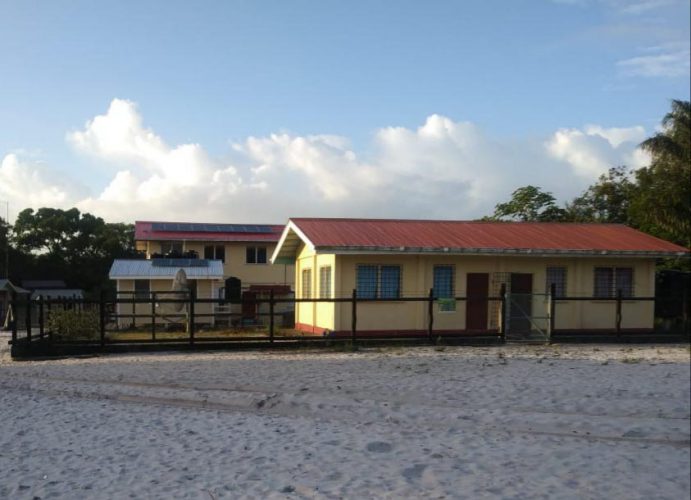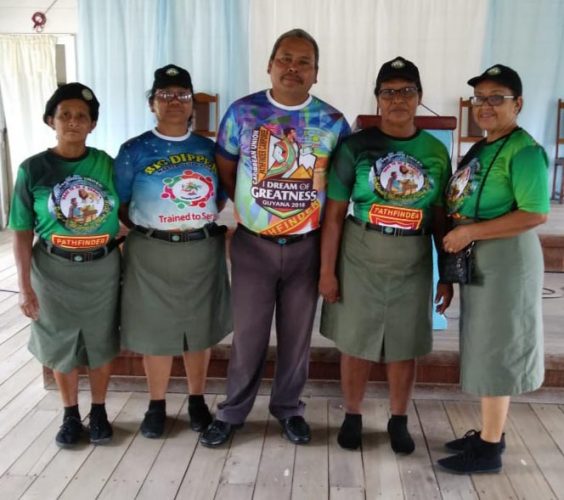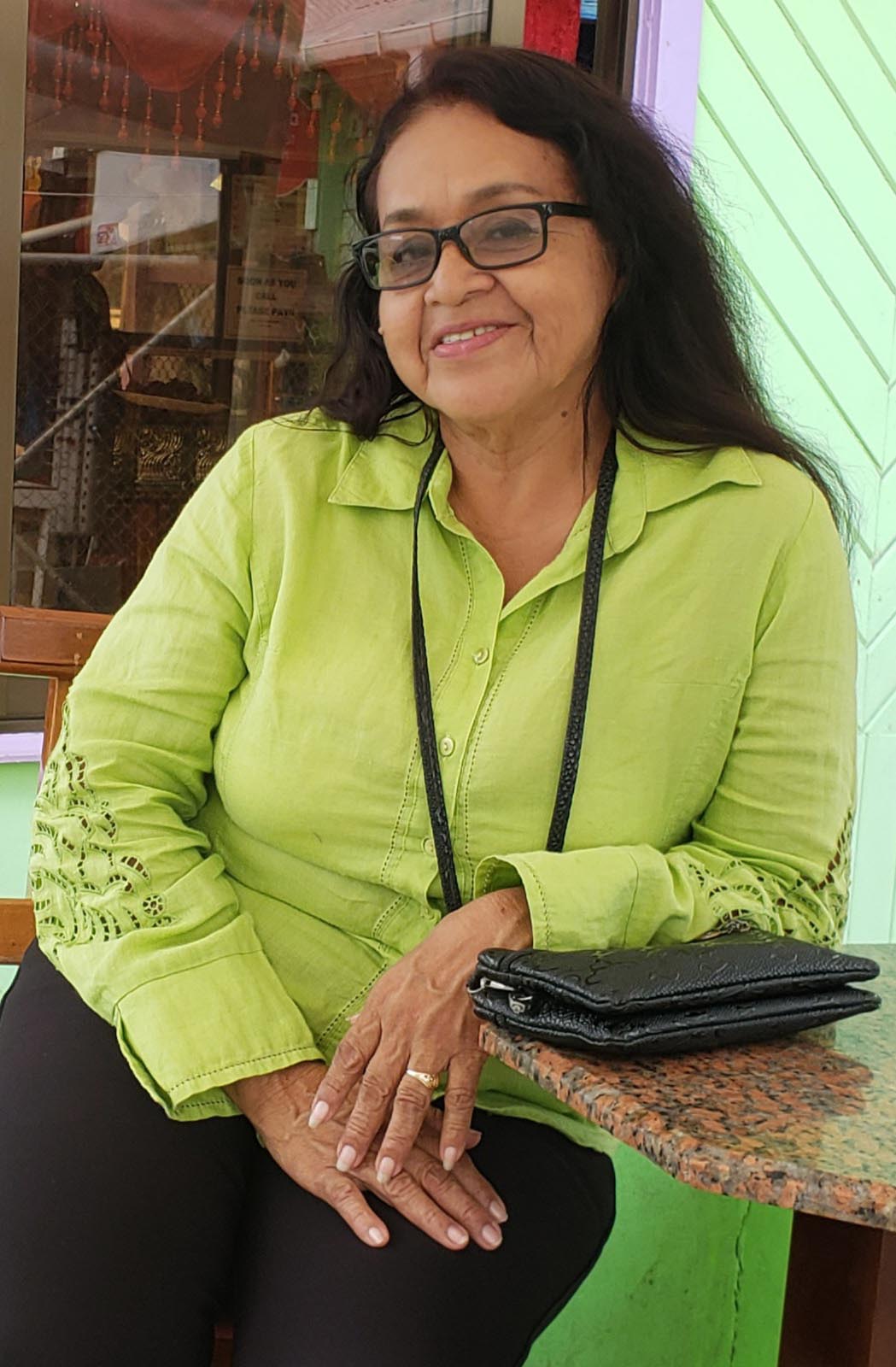When a then teenage Leola Agatha Marslow née Wilson began to teach, very much intending to use the experience as a stepping stone to some other profession, she could not have imagined that 42 years later she would be retiring from a fulfilling career as an educator.
“At every school I taught or headed there is something I worked on that would remind some students about me,” Marslow, 62, now a retired headmistress told Stabroek Weekend
Marslow, who comes from Bethany Village on the Arahouria Creek, a tributary of the Supenaam River in Region Two (Pomeroon-Supenaam), retired in 2014 with no regrets about joining one of the noblest professions. She was just 16 then. At 15 years, she was successful at the College of Preceptors examinations at then Bethany Seventh Day Adventist School. It marked the end of her primary education. “I wanted to become a journalist but my dad said he did not like journalism for me. He wanted me to do nursing which I didn’t want to do.”


In May, 1975, she started her teaching career at the then Mashabo Seventh Day Adventist School. At Mashabo, she wrote the End of Third Year Teachers examinations and was successful. Not satisfied, she studied on her own and wrote four subjects, English Language, Human Biology, Geography and History, at the General Certificate of Education Ordinary Levels. She passed all with good grades.
In 1977, she returned to Bethany, a predominantly Arawak community is some seven miles from the Supenaam Stelling, and taught at Bethany Primary. By that time all schools countrywide had been taken over by the government of the day. In 1978, she wrote the End of Fourth Year Teachers’ examinations and again passed with flying colours. She still did not apply to enter the Cyril Potter College of Education (CPCE), which she could have done since she had obtained the four GCE O’Level subjects.
“I continued teaching. I found that I liked it,” she said.
She entered CPCE in 1981. After graduation in 1983, she returned to Bethany Primary, where she stayed until 1993.
In 1987, when the head teacher retired, Marslow was left in the school alone to teach over 80 children. This experience would thrust her into heading several other schools in the region. The establishment had catered for four teachers.
“The head teacher retired. I was left alone to teach every class from Prep A to Form Three. It was really tough,” she said.
“One day, I was mentally and physically tired. I had to get immediate assistance. I could not wait for the Department of Education to appoint teachers. I closed the school for the day and I went to Anna Regina to meet with the Regional Education Officer, Mr Mohamed Khan. At that time the education department had the authority to temporarily appoint teachers. I gave Mr Khan the names of two persons who I believed were qualified enough and who I thought could have assisted me in teaching. He gave the approval.”
She continued, “There we were. Three young teachers. I was trained so I was left to guide the other two on the job.”
During that time, the children still had to write the then Secondary Schools Entrance Examinations (SSEE) and the Secondary Schools Proficiency Examinations (SSPE) Part 1. The pupils could not do the SSPE Part 2 because the school had no vocational education teacher.
“I taught the SSEE and SSPE children. That year we had one pass to Anna Regina Multilateral School and several passes to Abram Zuil Secondary School. That meant that we did very well.”
Bethany Primary, a grade E school, had hitherto been known for producing students who were offered hinterland scholarships to tops schools, including Queen’s College, Bishops’ High School, President’s College and Anna Regina Multilateral School. Many went on to become professionals in different fields of endeavour.
The school is also known for producing a number of teachers and head teachers who work in Region Two and across the country.
Professional and personal challenges
In 1988, the school got a head teacher and things improved, according to Marslow. “We worked well together. In 1991 when the HM left I was put in charge of the school”
1988 was also the year that Marslow née Wilson got married to Hubert Marslow, also of Bethany. Hubert, another trained teacher, spent a month at Bethany Primary after which he was transferred to Mashabo Primary.
Living and working in the hinterland come not only with professional challenges but also with personal challenges as Marslow related. When her husband was at Mashabo Primary, she and a colleague went one weekend to visit him. They walked through a track from Bethany to Mashabo. On returning to Bethany they were lost. “We were twice lost. We heard wild hogs and were scared. We met a man making posts and he gave us direction. We ended up back in Mashabo. There some men in a cart pulled by cows took us back on the track to Bethany. They dropped us off at a junction where they told us to follow a track. We followed the track and it took us back to Mashabo where we spent the night as it was already late. The next day, my husband accompanied us halfway to Bethany to ensure we would not get lost again.” Several tracks in the forest, made by loggers and hunters, lead to Mashabo, Capoey and Good Hope, among other places.
In 1993, both Marslow and her husband were transferred to St Monica’s Primary at St Monica, Upper Pomeroon River. She was appointed head teacher. Her husband had been trained at the CPCE after her, hence her seniority. At St Monica’s it was a bit challenging, she said, because it was the first time that both she and her husband were working at the same school. As head teacher she had to treat him as any other staff.
“At St Monica’s, another Grade E school, we lifted the standard of education. After 13 years, we were able to get places to Charity Secondary for pupils who wrote the SSEE and SSPE Part I.”
The couple worked at St Monica’s for four years after which they both returned to Bethany Primary in 1997, where Marslow was appointed head.
While at Bethany, Marslow pushed for a new school building to house the primary school, which was in a rundown one-flat building, and to establish a nursery school. Until 1999, Bethany had been without a nursery school. With support from the Region Two Education Department, she applied to the then Social Impact Amelioration Project (SIMAP) for funding. With the funding a new two-storey school building with adequate space for a nursery school on the ground floor was built. A restroom for the nursery children and a kitchen were added.
“I also wanted a library but that did not happen,” she said.
In 2000, Marslow was promoted to head Marlborough Primary, a grade D school, in the Lower Pomeroon River. Her husband was promoted to a senior master at the neighbouring school at Martindale. Marlborough had its challenges. “I was a woman of Indigenous stock heading a school in a strong farming, mixed-race community. African, Indian, Portuguese, Amerindian, among others.”
In 2002, she and her husband were transferred to the Essequibo Coast. Marslow was appointed head of Huis’t Dieren Primary, a Grade D school while her husband was appointed head of Good Hope Primary, another Grade D school.
Some of her best years as a teacher, she said, were at Huis’t Dieren Primary. “I was HM and the only Indigenous Person on the staff.” There were eight teachers and 130 children.
During her stay at Huis’t Dieren Primary, she developed a $1 million School Improvement Plan (SIP) but was transferred before it was approved. It was in place for her successor to deliver.
Initially, the people, who were mainly of East Indian descent, were hesitant about her appointment, she said. “When you share your vision with people, ask for their opinion and their advice, you build their trust and your own self-confidence. That was what I had to do. The staff and people became very supportive.” A devout Seventh Day Adventist, Marslow said, “I went to every Hindu or Muslim function I was invited to.”
After eight years, she was promoted once again. This time to head Fisher Primary, a Grade C school on the Essequibo Coast. Again she found herself being the only Indigenous Person on the staff. “I helped the staff to grow or my job would have been difficult.”
As an Indigenous Person working with persons of other races and ethnicities, she said, there was a time when she had to pull up staff members for telling another that they were “behaving like a buck” or “getting on like a buck” when one or the other did something nonsensical. Once she challenged the staff to, “Let us exchange faces. Take my face and let me take yours. Let us see how it feels.”
In 2004, she took part in a management and supervision training programme conducted by the National Centre for Educational Resource Development.
“I was able to help the staff to develop themselves at Fisher Primary while I developed my management skills. I allowed the staff to evaluate my performance.”
During the four years she spent at Fisher Primary, Marslow said, she designed another school improvement plan for Fisher Primary, which she was able to execute. “With the $1-million allocated, we built and equipped a kitchen. We improved the library, adding shelves and stocking them with books. We gave the HM’s office a facelift and we created a sick bay with a bed and a sink. We did all of this with a $1 million. Other head teachers would tease that we had an elastic $1 million,” she said.
“During my tenure at Fisher, we also set up a school canteen and a bicycle shed – not with the SIP million dollars – but with the help of the school’s parent-teachers association.” The bicycle shed was pulled down and another building has been built on the same site.
In 2013, her husband died and it was a rough time for Marslow. She retired the following year. She is thankful to education officers Constance Trim, Robert Ramlall, Claude Amsterdam and Denis Jaikarran, who guided her in the profession.
For her service she was honoured by the Region Two Education Department. In 2017, she was one of eight outstanding Amerindian educators, who was honoured by the Ministry of Indigenous People’s Affairs for her contribution to the education sector.
Retirement
On retiring, she took a break of a few years. When the then Ministry of Indigenous People’s Affairs stared the Hinterland, Employment and Youth Services programme she was employed to teach embroidery and sewing, which she had taught herself. “I did not keep my learning to myself. I shared what I had taught myself.”
She was later contracted by the Department of Education as a monitor for several schools on the Essequibo Coast and the Pomeroon River. Then COVID-19 struck and like many, she remains at home where she gardens and sews.
Yet, Marslow’s life was not only teaching in the formal education system but also in the wider community where she still remains an active member.
On completion of her studies at CPCE, she started a church choir at Bethany Seventh Day Adventist Church. She had done music as an option at CPCE. She had the support of her pastor, Lawrence London, and later on her husband. The church choir was selected on several occasions to represent Region Two at the national level of the Guyana Festival of Creative Arts. Marslow has the distinction of being the first female choir director in the Guyana Conference of Seventh Day Adventists.
She also assisted Angela Archer, who was her teacher when she was in Prep A, with the junior and senior choirs at Bethany Primary. The school choirs performed in concerts on the Essequibo Coast.
She was an active member of the church’s clubs such as the Pathfinders and Masters Guide. She has served on the church’s Essequibo North, Essequibo South and Pomeroon federations.






